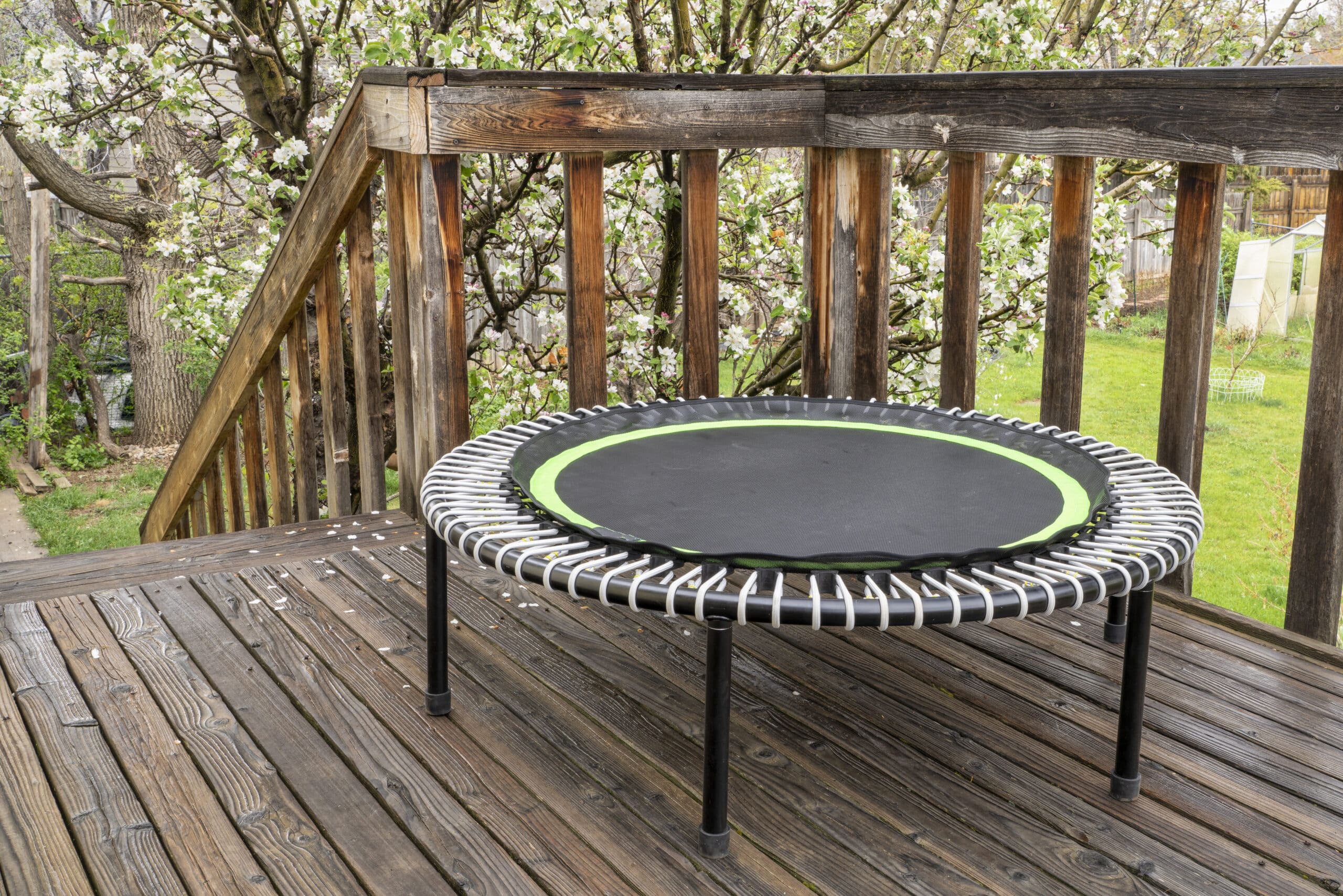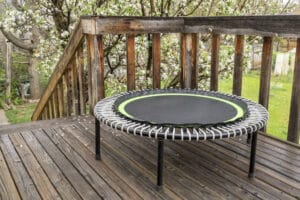How to Take Care of an Outdoor Trampoline
Key Takeaways
- Regular cleaning is crucial for maintaining an outdoor trampoline. Sweep off debris, spray with clean water, scrub with mild detergent, dry the mat, clean the springs and mat rods, conduct regular health checks, consider rust protection spray, place the trampoline strategically, and use a trampoline cover.
- Winterize your trampoline by removing the enclosure net, spring cover, and jump mat. Use a stake kit and weather cover to secure the trampoline to the ground and protect it from moisture and weather-related damage.
- Follow safety precautions when using an outdoor trampoline. Set up on a level surface, use a safety net, regularly check for tears and broken fixtures, remove objects underneath the trampoline, cover the frame, springs, and hooks, remove leaves and debris, supervise children, limit the number of jumpers, discourage somersaults or high-risk maneuvers, and remove ladders after use.
Outdoor trampolines provide endless hours of fun and entertainment for both children and adults. However, to ensure the longevity and safety of your trampoline, it is essential to follow proper maintenance and care practices. In this article, we will explore the best practices for maintaining an outdoor trampoline, including cleaning, winterizing, and safety precautions.
Cleaning and Maintenance
Regular cleaning is crucial to keep your trampoline in good condition. Here are some steps you can take to clean your outdoor trampoline:
- 1. Sweep off debris: Use a broom to remove any leaves, twigs, or other debris from the surface of the trampoline.
- 2. Spray with clean water: Use a hose or bucket to spray the trampoline with clean water, removing any dirt or dust.
- 3. Scrub with mild detergent: Use a sponge or soft-bristled brush along with mild detergent to scrub the trampoline mat gently. Avoid using harsh cleaning agents or abrasive materials that may damage the surface.
- 4. Dry the mat: After cleaning, dry the mat with a towel and let it air dry in the sun. This helps prevent mold and mildew growth.
- 5. Clean the springs and mat rods: If applicable, clean the springs and mat rods as well, using a mild detergent and water.
- 6. Conduct regular health checks: Regularly inspect the trampoline for any damage or issues. Check the frame, springs, and jumping surface for tears, detachment, or deterioration.
- 7. Consider rust protection spray: If your trampoline is susceptible to rust, consider using a rust protection spray on exposed metal parts to prevent corrosion.
- 8. Strategic placement: Place the trampoline strategically in the yard to avoid debris accumulation. Avoid placing it near trees or overhanging branches.
- 9. Use a trampoline cover: When not in use, cover the trampoline with a weatherproof cover to protect it from dirt, leaves, and other external elements.
Cleaning with soap and water should be done once or twice a month, depending on the environment and usage. Regular maintenance checks will help identify any potential issues and allow for timely repairs or replacements.
Winterizing Your Trampoline
Winter can be harsh on outdoor trampolines, so it’s important to take certain precautions to protect your investment during the colder months. Here’s how to winterize your trampoline:
- 1. Remove enclosure net, spring cover, and jump mat: Before winter arrives, disassemble and remove the enclosure net, spring cover, and jump mat. This prevents snow buildup and damage to these components.
- 2. Use a stake kit and weather cover: Secure the trampoline to the ground using a stake kit to prevent it from being blown away by strong winds. Additionally, cover the trampoline with a weatherproof cover to protect it from moisture and other weather-related damage.
Following these winterization steps will help prolong the lifespan of your trampoline and ensure it’s ready to use when the warmer weather returns.
Safety Precautions
While proper care and maintenance are essential, safety should always be the top priority when using an outdoor trampoline. Here are some safety precautions to follow:
- 1. Set up on a level surface: Ensure that the trampoline is set up on a flat and even surface. This helps prevent frame damage and provides a stable base for jumping.
- 2. Use a safety net: Install a safety net around the trampoline to prevent users from falling off the jumping surface. Regularly check the net for tears or other damage.
- 3. Regularly check for tears and broken fixtures: Inspect the trampoline regularly for tears in the mat, net, or padding. Also, check for any broken or loose fixtures that may pose a safety risk.
- 4. Remove objects underneath the trampoline: Ensure there are no objects such as rocks, toys, or other debris underneath the trampoline that could cause injury during jumping.
- 5. Cover frame, springs, and hooks: Protect the trampoline’s frame, springs, and hooks with safety pads or covers to prevent accidental contact and reduce the risk of injury.
- 6. Remove leaves and debris: Before jumping, remove any leaves, sticks, or other debris from the trampoline surface to prevent slipping or tripping hazards.
- 7. Supervise children: Always supervise children while they are using the trampoline. Ensure they follow the proper safety guidelines and don’t engage in risky behaviors.
- 8. Limit the number of jumpers: Allow only one person to jump on the trampoline at a time to reduce the risk of collisions and accidents.
- 9. No somersaults or high-risk maneuvers: Discourage somersaults or high-risk maneuvers unless under proper supervision and instruction. These maneuvers can lead to serious injuries if not performed correctly.
- 10. Remove ladders after use: If your trampoline has a ladder, remove it after use to prevent unsupervised access.
By following these safety precautions, you can minimize the risk of accidents and injuries while enjoying your outdoor trampoline.
Conclusion
Taking care of an outdoor trampoline involves regular cleaning, maintenance checks, winterization, and implementing safety precautions. By following these best practices, you can ensure the longevity, performance, and safety of your trampoline. Remember to always prioritize safety and supervise children while using the trampoline.
Related Websites:
FAQs:
Q: Why is it important to take care of an outdoor trampoline?
Taking care of an outdoor trampoline is important to ensure its longevity and durability. Neglecting trampoline maintenance can lead to potential risks and hazards. Regular care helps prevent damage, and ensures a safe and enjoyable experience for users.
Q: How should I clean my outdoor trampoline?
Regular cleaning is important to keep your trampoline free from dirt, debris, and leaves. To clean your outdoor trampoline safely and effectively, use a mild soap and water solution. Avoid using harsh chemicals or abrasive materials that can damage the trampoline’s surface. Gently scrub the mat, springs, frame, and safety enclosure, and rinse thoroughly with water.
Q: How can I protect my outdoor trampoline from harsh weather conditions?
To protect your outdoor trampoline from harsh weather conditions, it is recommended to use a weatherproof cover. A cover helps prevent damage from rain, snow, and UV rays. Ensure the cover is properly secured to the trampoline to prevent it from blowing off. Additionally, consider anchoring the trampoline to the ground using stakes or sandbags to prevent it from being blown away by strong winds.
Q: What are some safety precautions I should take for my outdoor trampoline?
When using an outdoor trampoline, it is important to establish rules and guidelines. Limit the number of jumpers at a time, and discourage somersaults or dangerous maneuvers. Ensure a safe environment by maintaining proper clearance around the trampoline, removing any obstacles. Install safety padding and an enclosure net to prevent injuries from falls or accidental contact with the frame or springs.
Q: How can I repair or replace parts of my outdoor trampoline?
For minor damages or worn-out parts, it is important to follow manufacturer guidelines and use high-quality replacement parts. Inspect the trampoline regularly for any damages or wear. If you notice any issues, such as torn mat, loose springs, or damaged frame, consult the manufacturer’s instructions for repair or replacement. Ensure proper installation and maintenance to keep your trampoline in optimal condition.






